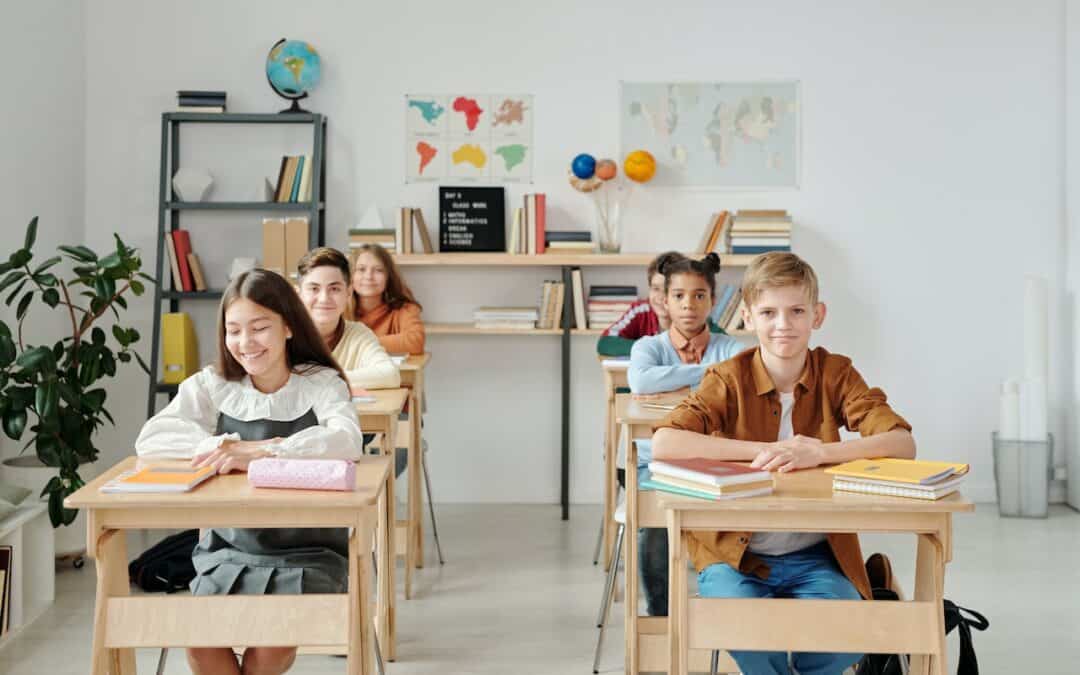
Teaching Boundaries Activities
Setting boundaries is important in leading a successful and emotionally rewarding life. (HarvardBusinessPublishing) Sometimes, when we feel uncomfortable we instinctively know when our boundaries are crossed. However, both children and adults often have trouble understanding what’s happening on an intellectual level at times when they have that instinctive sense that their boundaries are being crossed. Additionally, children might not always have a clear idea about how to process and respond to uncomfortable situations that result from violations of their sense of autonomy, however large or small those experiences are. (GSE)
A well-rounded education built with social-emotional learning can include learning opportunities that help children with boundaries. In order to develop into confident and well-rounded members of society, children need to learn how to define their boundaries, and subsequently, how to maintain those boundaries.
In order to create activities that incorporate teaching boundaries, it’s important to first define boundaries. Once you define these boundaries it also gives children an idea of different kinds of boundaries that need to be respected.
Here’s a brief overview of the seven (7) types of boundaries:
Seven Types of Boundaries
1. Physical Boundaries
People generally require physical boundaries in order to maintain a basic sense of safety. Everyone has different thresholds and triggers that give them a sense that their physical boundaries are not respected. Some examples include:
- Unwelcome touching of any kind
- How close a person is to their personal space (for example someone might be standing too close)
- Sanctity of their things–is their lunch, school supplies, jacket, etc., respected?
It is important to recognize that different kids have different levels of comfort with physical boundaries. Some might need you to stand further away. Some don’t mind if their classmates touch their backpacks. Some kids love hugs and others don’t like to be touched at all. With this You Belong poster, kids come into the classroom in a line and touch the symbol of what they prefer – a hug, a high five, a handshake, or a fist bump.
Children need to be aware of what their preferences are when it comes to their physical boundaries. Then they can be encouraged to vocalize those boundaries.
2. Emotional and Mental Boundaries

Children might not always recognize that their emotional and mental boundaries aren’t being respected because they haven’t yet developed the tools to recognize and articulate their feelings about what makes them emotionally and mentally uncomfortable. Therefore, with younger kids, especially, look for clues like:
- If the child has trouble talking about a particular subject
- If the child is showing signs of embarrassment
These kinds of signs can mean the child is sensing that someone has crossed their mental or emotional boundaries.
3. Spiritual or Religious Boundaries
This is sometimes a challenging subject to approach in a classroom setting, but it might come up. Classrooms are full of kids with many different backgrounds. Educators will have to prepare themselves to moderate situations arising from a need for spiritual and religious boundaries.
4. Time Boundaries
School is an ideal learning environment to help children figure out how to create and defend their schedules. Adults, more than children, tend to have trouble setting boundaries with their time. Therefore, it’s valuable for children to learn how to recognize when people are taking advantage of their time so they can set boundaries in adulthood. For example, when a student is trying to complete an assignment and someone is distracting them, they can learn to say, “I’ll talk to you later. I need to do my work right now.”
5. Financial and Material Boundaries

Children won’t need to worry about placing boundaries around finances in elementary school. Financial boundaries have more to do with adulthood. However, class stores and using play money can be introduced in elementary school to help them become aware of financial priorities.
6. Sexual Boundaries
It is never too early for children to develop an understanding of having and respecting bodily boundaries. While the youngest grades might not be the ideal environment for conversations about sexual boundaries, it is an ideal environment to start talking about respecting the physical comfort and safety of themselves and other people.
7. Non-negotiable Boundaries
Boundaries are about safety and comfort. Therefore, violation of those boundaries can seriously compromise a person’s sense of well-being. Because every child comes from a different background, every child will have unique ideas and situations that will inform personal non-negotiable boundaries. Both parents and educators can help children figure out those boundaries.
Boundaries for Kids
Kids will test boundaries. They will test their own boundaries, trying things to see how uncomfortable those things leave them. Their peers will have boundaries, and kids will test those, figuring out how the community will react to them. Teachers and parents will set boundaries, and kids will push against those boundaries to figure out how far they can be pushed. It’s not only natural to do it, but kids will learn a lot about how boundaries work by checking out how pliable the boundaries around them are. (UsableKnowledge)
As a result, one effective way to teach boundaries in a safe way is through demonstration. (ChildMindInstitute) Boundaries correlate with responding to actions, feelings, and social interactions. Therefore, children will look to their peers and the important adults in their lives to learn how to create appropriate boundaries.
Teaching Boundaries Activities
Here are a few suggestions for creating activities that will create more intentional learning experiences for children:
-
- Board games and yard games. These are great ways to simulate life’s boundaries. Talk about why the rules are important. What happens when a rule is broken? etc.
- Class discussions. Moderated conversations about the different types of boundaries help relate abstract ideas to experiences.
- Role-playing. Children learn a lot from acting out complex scenarios. (HowtoAdult)
- Value assessment. When children have to articulate what they find important they will also start thinking about protecting those values.
- Reading with subsequent guided conversation.
Soul Shoppe encourages building healthy boundaries in children. Whether helping in the classroom or assisting parents at home, Soul Shoppe provides tools to help teachers and parents teach social emotional skills to children. Click for more information on SEL Programs for Elementary Schools or our parent support programs.
You May Also Like:
Social Emotional Virtual Activities

